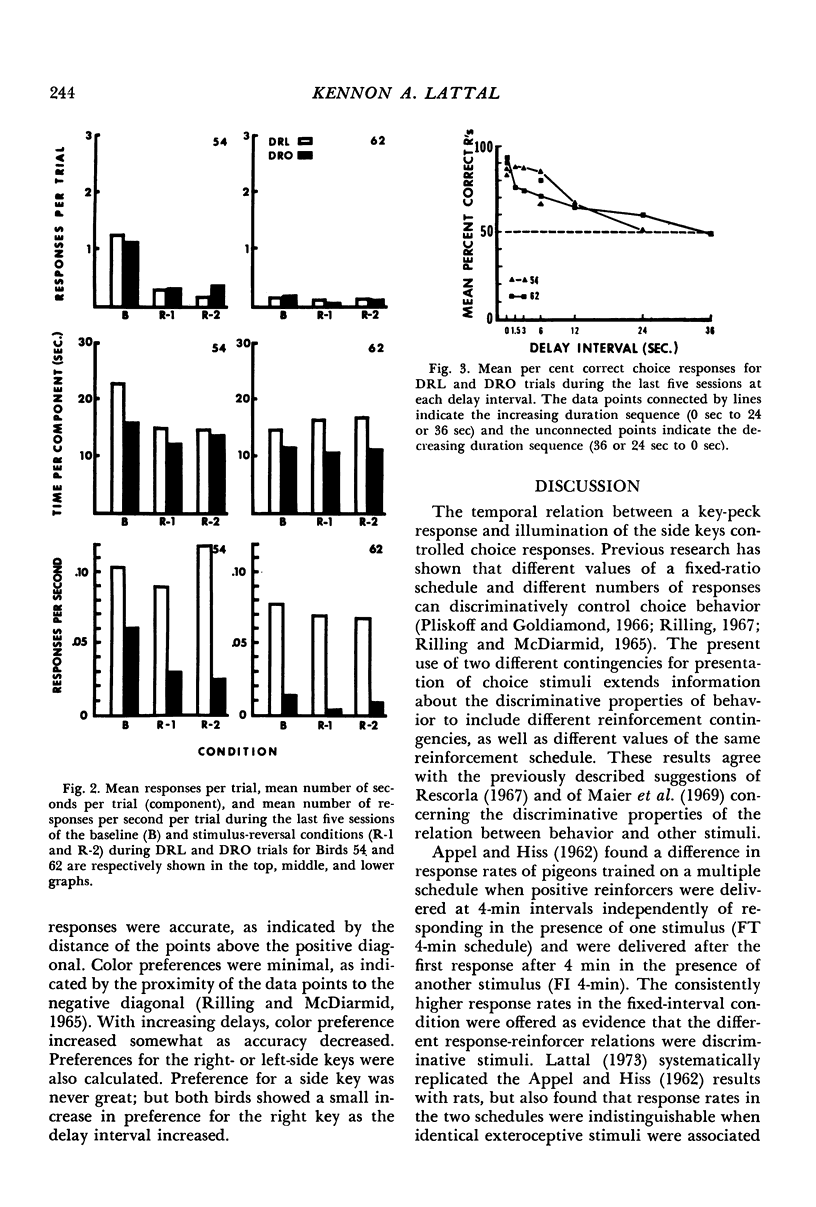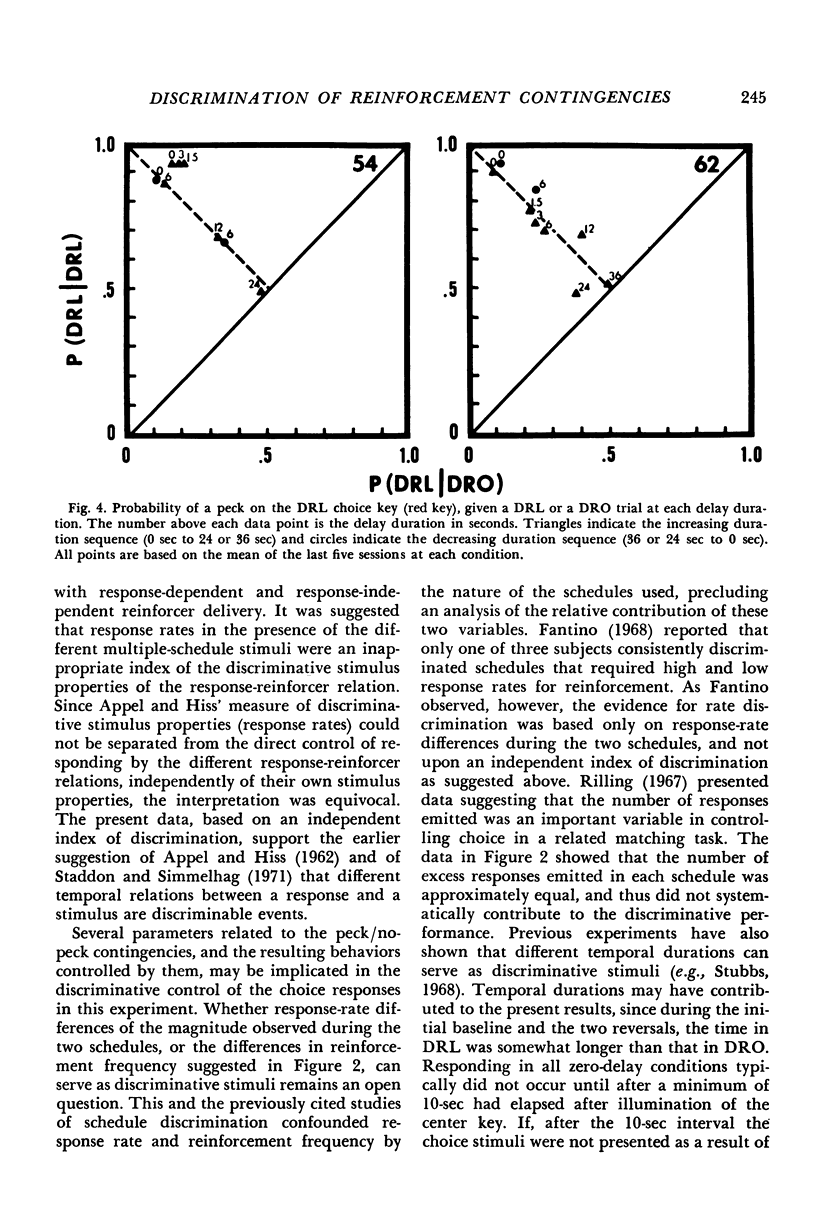Abstract
A matching paradigm was used to examine the discriminative properties of two different reinforcement contingencies. Responding according to either a differential-reinforcement-of-low-rate or a differential-reinforcement-of-other-behavior schedule produced a choice situation in which each of two keys was illuminated with a unique color. The correct choice response was defined by the contingency that was met to produce the choice. Eighty to 100% correct matching was obtained and recovered during two reversals of the choice stimuli. Introduction of a delay between completion of the reinforcement contingency and presentation of the choice stimuli resulted in decrements in matching performances similar to those obtained when other types of sample stimuli are used. The results provided evidence of the discriminative properties of the relation between behavior and other classes of stimuli.
Full text
PDF





Selected References
These references are in PubMed. This may not be the complete list of references from this article.
- APPEL J. B., HISS R. H. The discrimination of contingent from noncontingent reinforcement. J Comp Physiol Psychol. 1962 Feb;55:37–39. doi: 10.1037/h0044613. [DOI] [PubMed] [Google Scholar]
- BLOUGH D. S. Delayed matching in the pigeon. J Exp Anal Behav. 1959 Apr;2:151–160. doi: 10.1901/jeab.1959.2-151. [DOI] [PMC free article] [PubMed] [Google Scholar]
- Cumming W. W., Berryman R., Cohen L. R. Acquisition and transfer of zero-delay matching. Psychol Rep. 1965 Oct;17(2):435–445. doi: 10.2466/pr0.1965.17.2.435. [DOI] [PubMed] [Google Scholar]
- Fantino E. Effects of required rates of responding upon choice. J Exp Anal Behav. 1968 Jan;11(1):15–22. doi: 10.1901/jeab.1968.11-15. [DOI] [PMC free article] [PubMed] [Google Scholar]
- Lattal K. A. Response-reinforcer dependence and independence in multiple and mixed schedules. J Exp Anal Behav. 1973 Sep;20(2):265–271. doi: 10.1901/jeab.1973.20-265. [DOI] [PMC free article] [PubMed] [Google Scholar]
- Pliskoff S. S., Goldiamond I. Some discriminative properties of fixed ratio performance in the pigeon. J Exp Anal Behav. 1966 Jan;9(1):1–9. doi: 10.1901/jeab.1966.9-1. [DOI] [PMC free article] [PubMed] [Google Scholar]
- RILLING M., MCDIARMID C. SIGNAL DETECTION IN FIXED-RATIO SCHEDULES. Science. 1965 Apr 23;148(3669):526–527. doi: 10.1126/science.148.3669.526. [DOI] [PubMed] [Google Scholar]
- Rescorla R. A. Pavlovian conditioning and its proper control procedures. Psychol Rev. 1967 Jan;74(1):71–80. doi: 10.1037/h0024109. [DOI] [PubMed] [Google Scholar]
- Rilling M. Number of responses as a stimulus in fixed interval and fixed ratio schedules. J Comp Physiol Psychol. 1967 Feb;63(1):60–65. doi: 10.1037/h0024164. [DOI] [PubMed] [Google Scholar]
- Stubbs A. The discrimination of stimulus duration by pigeons. J Exp Anal Behav. 1968 May;11(3):223–238. doi: 10.1901/jeab.1968.11-223. [DOI] [PMC free article] [PubMed] [Google Scholar]


